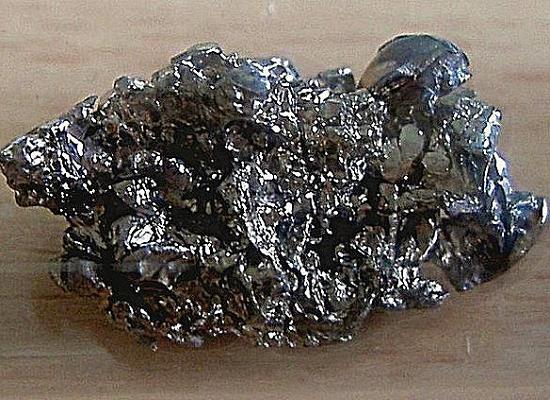Barium: resource, applications and toxicity
General Description
Barium is a valuable resource widely used in industries such as chemical and construction. The global reserves of barium are substantial, with Iran holding the largest reserve. China leads in production output and contributes significantly to drilling operations. Barium sulfate has various applications, including secondary source recovery, construction materials production, environmental remediation, and catalysis. However, barium toxicity is a concern, and its health effects on humans are not well understood. Further research is needed to understand the bioaccumulation of barium and mitigate its potential health impacts on vulnerable subgroups.

Figure 1. Barium
Resource
Barium is a non-metallic mineral resource that finds wide applications in the chemical and construction industries. As of 2021, global barite reserves are estimated to be approximately 390 million tons, with Iran holding the largest reserve of 100 million tons. China, India, and Morocco have been the primary contributors to barite mine production in recent years, as shown in Figure 1. Among them, China has the highest production output, with significant reserves located mainly in southern regions such as Hunan, Zhejiang, Guizhou, and Guangxi provinces. The majority (over 80%) of barium mined globally is utilized as a weighting agent in drilling fluids, specifically in oil and natural gas wells. This is due to its chemical and physical inertness, as well as its high specific gravity, which effectively increases the density of drilling muds. By balancing reservoir pressure and preventing blowouts, barite contributes significantly to drilling operations. In conclusion, barium is a valuable resource extensively used in various industries. Its global reserves are substantial, with Iran possessing the largest reserve, while China leads in production output and distribution. 1
Applications
Barium sulfate has diverse applications, and efforts have been made to discover cost-efficient and sustainable uses for it. One major application is in the recovery of secondary sources, where BS is utilized to extract valuable materials from waste products. Additionally, BS finds use in the production of construction materials such as cement clinker, cementitious additives, ceramics, and bricks. By incorporating BS into these materials, large amounts of BS can be recycled without generating secondary waste residue. BS is also employed in environmental remediation. It can be utilized to treat acidic industrial wastewater by neutralizing the acidity. Adding BS and lime to acidic wastewater helps raise the pH level and remove heavy metals like Pb, Zn, and Cd through precipitation. Furthermore, Barium sulfate has shown promise in the removal of contaminants, such as phosphates, from effluent. When combined with calcium hydroxide, BS exhibits a synergistic effect that enhances its phosphate removal capacity. It has been found that BS, when used alone, effectively removes phosphates, but it releases barium into the solution. To mitigate this, modified BS materials with the addition of certain compounds, like PG, have been developed to enhance phosphate adsorption while reducing barium release. In addition to its role in environmental applications, Barium sulfate also possesses catalytic properties. The presence of metallic elements, including barium, calcium, iron, and magnesium, in BS can improve electrochemical performance in direct carbon solid oxide fuel cells and enhance carbon gasification reactions. In summary, Barium sulfate has a range of applications including secondary source recovery, construction materials production, environmental adsorbents, wastewater treatment, and catalysis. 2
Toxicity
Barium toxicity is an area of concern, particularly due to the expanding industrial uses of this element. The absorption of barium in humans and its full range of health effects, especially in populations exposed to moderate and low doses of barium over a long period, are not well understood. Most of the knowledge regarding the potential health effects of barium exposure comes from animal studies, while human epidemiological data, especially for chronic low-level exposures, are limited. Reported health effects include cardiovascular and kidney diseases, metabolic disorders, neurological issues, and mental disorders. Factors such as age, race, diet, behavioral risks (e.g., smoking), use of certain medications, and physiological status (e.g., pregnancy) can influence the impact of barium on human health. Understanding the bioaccumulation of barium and mitigating its potential health impacts in various exposed populations are challenging tasks that require further research. It is also crucial to identify vulnerable subgroups, including the elderly, pregnant women, and children, among non-occupationally exposed populations who may have higher risks of barium exposure through drinking water and food sources. 3
Reference
1. Ebunu AI, Olanrewaju YA, Ogolo O, Adetunji AR, Onwualu AP. Barite as an industrial mineral in Nigeria: occurrence, utilization, challenges and future prospects. Heliyon. 2021 Jun 21;7(6):e07365.
2. Gu H, Yang Y, Guo T, Xiao J, Gao Y, Wang N. Review on treatment and utilization of barium slag in China. J Environ Manage. 2023 Jan 1;325(Pt A):116461.
3. Kravchenko J, Darrah TH, Miller RK, Lyerly HK, Vengosh A. A review of the health impacts of barium from natural and anthropogenic exposure. Environ Geochem Health. 2014 Aug;36(4):797-814.





